IRELAND
History

History
Cities in IRELAND
| Cork | Dublin |
History
Antiquity
Small groups of hunters settled in Ireland about 6,000 BC. Flint weapons and tools have been found on the north and east coast in particular. In the late Stone Age (from 3000 BC) other peoples invaded Ireland from the Mediterranean and the Atlantic coast. They practiced agriculture, kept animals and erected many megalithic tombs.
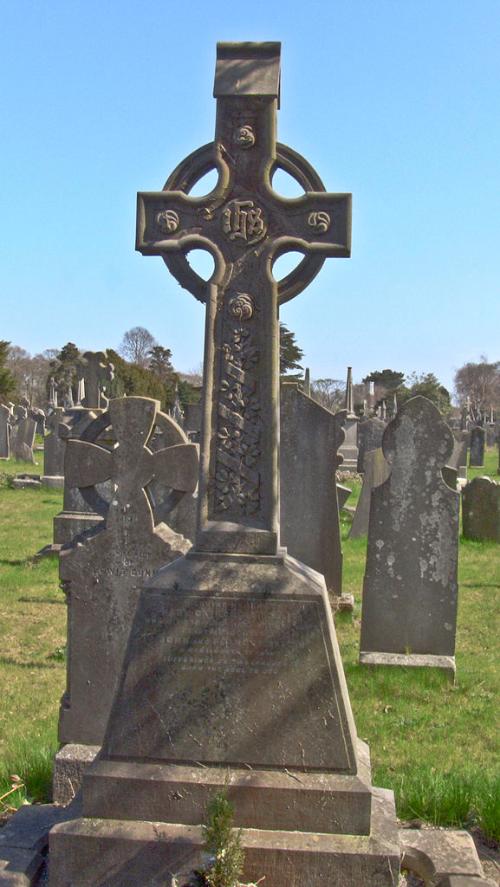 Celtic Cross IrelandPhoto: William Murphy CC 2.0 Generic no changes made
Celtic Cross IrelandPhoto: William Murphy CC 2.0 Generic no changes made
The Bronze Age lasted from about 2000 BC. to 500 BC. Many weapons, tools and (including gold) jewelery from that period can still be seen in the National Museum in Dublin. From the fifth century BC. The Celts from Spain, France and southern Germany invaded Ireland in waves. They had iron weapons and, among other things, had little trouble submitting to the native population. The Celts spoke an Indo-European language, the basis for Irish or Gaelic. The Celts live according to the clan system. About 150 small kingdoms (tuatha) headed by a supreme king (Ard Rí). The Celtic people were divided into three classes, the free (warriors), the unfree (including druids, musicians and poets) and slaves. Celtic society had no scripture but had a highly regarded storytelling culture. The Romans left the Celts alone, which allowed the Celtic culture to flourish. The fall of the Roman Empire, from the third AD onwards, led to a period also known as the “Golden Age”. St. Patrick came to Ireland in 432 and converted all of Ireland within a few decades. St. Patrick and his followers founded churches and monasteries everywhere and also introduced the Latin alphabet. Due to the problems in mainland Europe (including the migration of people) it was relatively quiet in Ireland. Many scholars and monastic orders fled to Ireland, so that arts and science flourished.
Middle Ages
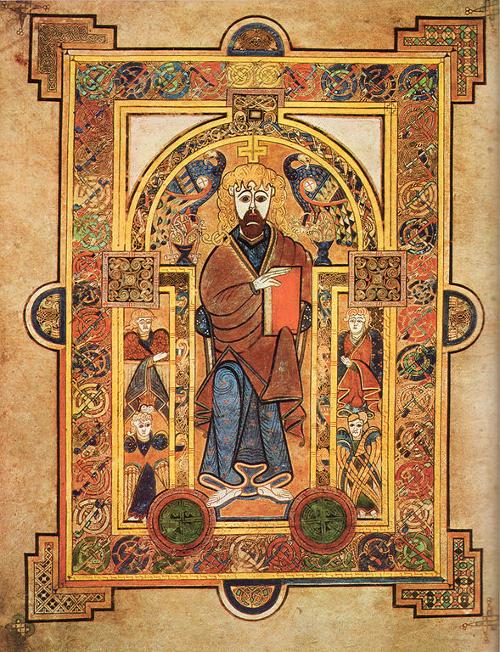 Book of Kells IrelandPhoto:Public domain
Book of Kells IrelandPhoto:Public domain
The art of writing and illustrating reached a very high level; the Book of Kells is one of the most beautifully illustrated manuscripts from that period. The Golden Age came to an end with the Viking raids. The monasteries in particular were looted. Along the coast, trading posts were established by the Vikings from which later cities such as Dublin, Waterford and Cork emerged. They also introduced the money economy. In 1014, the Vikings were defeated at Clontarf. After this, the country fragmented and fell prey to mutual disputes. One of those deposed kings enlisted the help of Anglo-Norman troops (England and Normandy were joined by a personal union at the time), which began an almost 800-year domination of the English. The Irish obviously resisted the occupiers fiercely, and the Anglo-Normans failed to really subdue the Irish. On the contrary, the Anglo-Normans were more or less absorbed in the Irish people, using names and language. In the fifteenth century, large parts of Ireland were therefore dominated by the FitzGeralds from Kildare, an Anglo-Norman family. A major change began with the departure of Henry VIII from the Catholic Church. Henry put himself at the head of his own Anglican church, which of course he also wanted to import into Ireland. However, the Irish refused and remained Catholic, even when Henry closed monasteries and forbade the priesthood. After the lost uprising of 1534, Ireland was divided into 32 counties in 1540, a division that still exists today.
Tudors
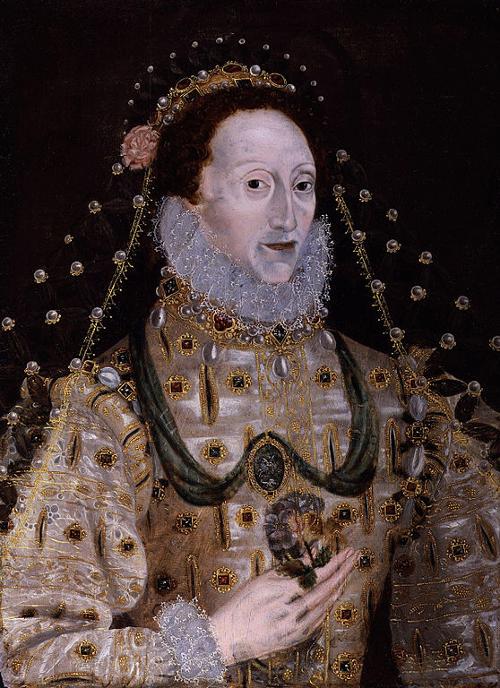 Elizabeth I IrelandPhoto: Public domain
Elizabeth I IrelandPhoto: Public domain
In the course of the sixteenth century, the Tudor princes Henry VIII, Edward VI, Mary I and Elisabeth I subdued all of Ireland and the Celtic order slowly went under. In 1558, Elisabeth I forbade the celebration of Holy Mass, after which the Catholic Church went underground. Ulster, Northern Ireland, resisted most of the policies of Elisabeth I. A three-year uprising followed, but was lost. As a result, many Irish leaders fled to mainland Europe, the “Flight of the Earls”. At that time Ireland was completely dominated by the English. The six northern counties were taken over by Scottish and English Protestants, much to the anger of the Catholic Irish. Here, in fact, the dichotomy of Northern Ireland began, which has caused many problems to this day.
In 1641, the Irish revolted against the English who were brutally crushed by Oliver Cromwell, who came to power in England after a civil war. Tens of thousands of Irish people died. In 1660, the monarchy recovered in England and the Irish regained hope of reparation. However, James II was succeeded by the Protestant Willem III (van Oranje) who restored Protestant superiority after the Battle of the Boyne in 1690. The small group of Protestants did not feel safe from the large mass of Catholics who lived in extreme poverty.
18th and 19th eeuw
The Penal Laws were introduced between 1695 and 1705, which deprived Catholic Irish of almost all their rights. In response, many Irish immigrated to the United States. The Irish who stayed tried to preserve Irish culture underground. In 1778, the Penal Laws were somewhat softened, partly because England waged several wars and was afraid of a major uprising in Ireland. A parliament, albeit made up of Protestants, was even installed.
The ideals of the French Revolution in 1789 led to the creation of the United Irishmen by Theobald Wolfe Tone. They strived for an independent Irish Republic with equal rights for Protestants and Catholics. In 1794 such organizations were banned by the English. In the north, on the other hand, the Protestants wanted nothing more than to stay with England. The Orange Order and the English that still exist today suppressed an attempt at Revolution in 1798 by Tone. The Act of Union of 1800 reversed limited Irish self-government and incorporated Ireland as a whole into the United Kingdom. This would last until 1921. In the 19th century, the Catholic Church recovered somewhat, culminating in the taking of a seat in the English Parliament by Catholic David O'Connell.
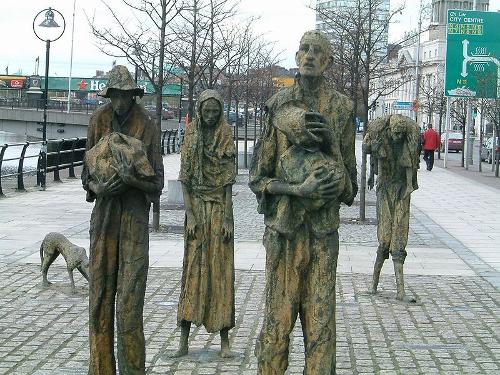 Great Famine Monument IrelandPhoto: Public domain
Great Famine Monument IrelandPhoto: Public domain
Between 1845 and 1847, Ireland suffered hunger from three successive failed potato harvests (Great Famine). One and a half million Irish died of starvation or epidemics. One and a half million Irish people emigrated, particularly to the United States and Australia. The British government offered hardly any help, on the contrary: exports of grain, meat and dairy products to England continued. In 1872, the Irish tenants gained slightly more rights by the introduction of secret elections. However, they did not think that was enough and founded the Land League. Action was taken everywhere and this eventually led to the abolition of the lease system. Attempts to gain self-government, called Home Rule, have failed for the time being.
20e eeuw
In the early 20th century, various political (militant) movements such as Sinn Féin (We Only), the Irish Socialist Republican Party and the Irish Citizen Army were established, all of which showed strong nationalist traits. In 1912, the House of Commons adopted the Home Rule Bill. However, due to a veto from the House of Lords, this was canceled. The Northern Irish Orange men looked with dismay at Irish nationalism and even founded their own army, the Ulster Volunteers. Civil war seemed to be breaking out when the nationalists (Irish Republican Brotherhood) also set up their own army, the Irish Volunteers. However, the outbreak of World War I changed everything. Hundreds of thousands of Irish fought on the Allied side and thought they could claim the right to self-government as a kind of reward. However, the Irish Republican Brotherhood saw an opportunity to establish self-government precisely in the British weakness. All this led to an uprising in Dublin in 1916. Due to poor organization, the Easter uprising quickly came to an end. The English sent a small army and executed 14 rebel leaders.
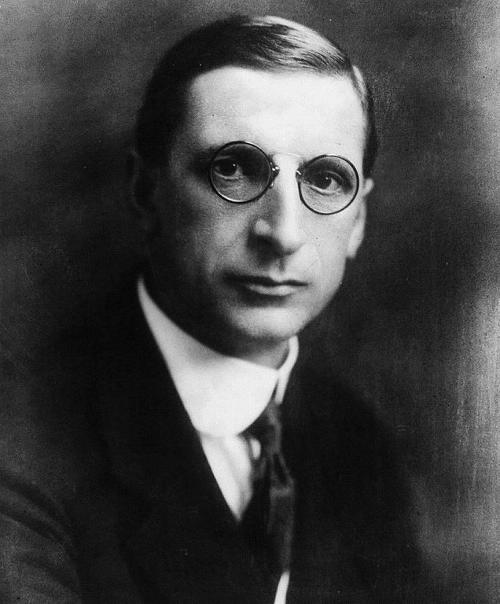 Éamon de Valera, IrelandPhoto: Public domain
Éamon de Valera, IrelandPhoto: Public domain
Éamon de Valera, Sinn Féin foreman, survived because he had an American passport. The 1917 parliamentary elections were won by Sinn Féin. However, the elected representatives did not take their seat in Westminster, but met in Dublin. Under the leadership of De Valera, the declaration of independence of the Easter uprising was signed.
The British sent a paramilitary police force to Ireland and fought a bitter battle with the Irish Republic Army (IRA), which was established in 1919. In July 1919, an armistice was concluded. After negotiations, Ireland gained free state status in the British Commonwealth in 1921. They were even allowed to conduct their own foreign policy. The land was divided in two; the six northern counties (Ulster) remained connected to the United Kingdom, the remaining 26 counties forming the Irish Free State. The treaty did cause a split within the IRA. The Republicans of Irregulars led by De Valera did not agree. It led to a bloody civil war won in 1923 by the supporters of the treaty. In 1926 De Valera founded a new party, the Fianna Faíl. This party won the 1932 elections and De Valera became prime minister. The United Kingdom was in a constitutional crisis in 1934 after Edward VIII resigned. De Valera and parliament passed a new law that ousted the British king as head of state. At that time, Ireland became a sovereign state within the Commonwealth. Douglas Hyde was elected the first president in 1938. Ireland remained officially neutral during the Second World War, although De Valera and the IRA could not be denied any pro-German (and therefore anti-English) sentiments. In 1948, the government of De Valera was relieved by a coalition of which Fine Gael was the largest party. This government declared Ireland a republic in 1949, leaving the Commonwealth of Nations. With Prime Minister Seán Lemass taking office, things were going in the right direction economically. Foreign companies were brought in through favorable location regulations and low tax rates. Agriculture benefited in particular from its accession to the European Union in 1973. Due to the crisis in the 1980s, unemployment rose rapidly (up to 19% of the labor force), and 300,000 people left the country.
 Mary McAleese, IrelandPhoto: Public domain
Mary McAleese, IrelandPhoto: Public domain
The 1990 parliamentary election was surprisingly won by Mary Robinson. September 1997, Mary Robinson stepped down as president and was succeeded by Mary McAleese. On the Northern Ireland issue, a peace agreement was signed in 1998 between Ireland, Northern Ireland and Great Britain. One of the provisions was that the claims in the territory of Northern Ireland would be removed from the Constitution.
21e eeuw
National elections were held in Ireland in May 2002. The governing parties, Fianna Fail (FF) and Progressive Democrats (PD) have emerged victorious and have again formed a center-right government that, compared to the previous period, can now count on a majority (88 seats out of 166) in the Dáil Éireann. Bertie Ahern was rewarded for a five-year term of government that included the greatest increase in prosperity in the state's existence. The largest opposition party (Fine Gael) suffered a loss and Labor remained unchanged, against expectations. The more pronounced opposition parties on the left, however, have done well. Sinn Fein (SF from 1 to 5 seats) and the Green Party both won. Furthermore, an unprecedentedly large number (13) of independent candidates were chosen, usually on one specific issue (such as health care).
The elections to the European Parliament on June 3, 2004, with a turnout of 61.0%, did not go well for the ruling party, the FF: 31.7%, a decrease of 7.2% compared to the elections of 1999. The junior partner PD did slightly better with a profit of 1%. The winner was the Sinn Fein, the IRA's political arm that raised its voting share to 8.1%, almost doubling it.
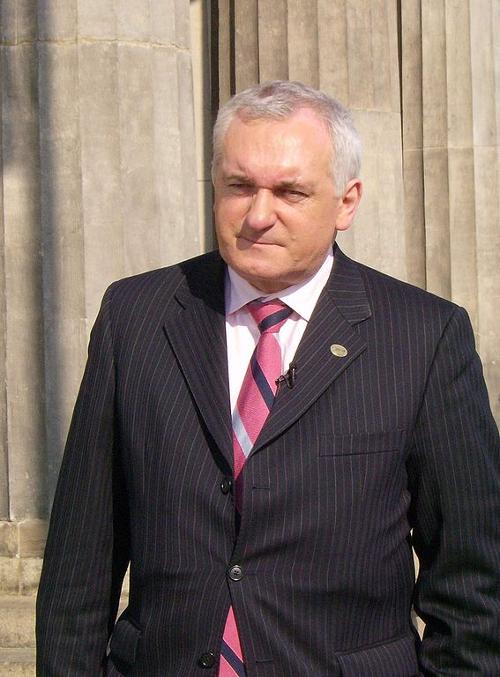 Berti Ahern Northern IrelandPhoto:ProhibitOnions on the English Wikipedia CC 2.5 Unported no changes made
Berti Ahern Northern IrelandPhoto:ProhibitOnions on the English Wikipedia CC 2.5 Unported no changes made
In the summer of 2004, after the biggest electoral defeat for decades in the local elections and the elections to the European Parliament, which were so disappointing for Fianna Fail, it became clear that a policy change of course, together with a change in the ministerial team, was inevitable to build the confidence of to win back the voters. On September 29, 2004, Taoiseach, Bertie Ahern, announced eleven changes to his cabinet. The most notable reappointments as minister were those of Brian Cowen (formerly Secretary of State) for Finance, Mary Harney for Public Health and the appointment of Dermot Ahern as the new Secretary of State.
New presidential elections were due to take place in October 2004, but as popular incumbent President Mary McAleese was the only candidate, it was not a vote. She was inaugurated for a second term on 11 November 2004. President McAleese, self from Northern Ireland, sees herself as President of all Irish. The head of government has been Brian Cowan since May 2008. In June 2008, Ireland decided in a referendum against a new European treaty. In October 2008, Ireland became the first country in Western Europe to go into recession, and in February 2009 more than 100,000 Irish people protested against the way the government is fighting the economic crisis. In October 2009, the Irish vote in a new referendum for the Lisbon Treaty.
On November 11, 2011, Michael Higging becomes the new President of Ireland. In February 2013 Prime Minister Enda Kenny apologized for the role that the Irish state played in the Magdalena Laundries. Here girls who "got into trouble" were exploited. Ireland will be back on its own feet in economic terms in December 2013 and will no longer need EU support. In April 2014, President Michael Higgins made the first ever state visit to Britain. In May 2015, the Irish vote in a referendum for same-sex marriage. In the February 2016 elections, the coalition loses the majority, but Fine Gaele remains the largest party. In April 2016, Kenny formed a minority coalition with Fianna Fail.
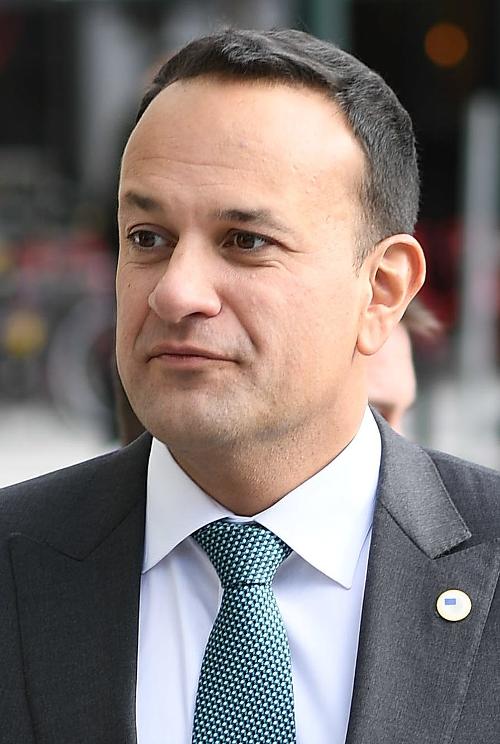 Leo Varadkar IrelandPhoto: EPP CC 2.0 Generic no changes made
Leo Varadkar IrelandPhoto: EPP CC 2.0 Generic no changes made
In May 2017 announces his resignation after a scandal raised by a police whistleblower. In June he is succeeded by fellow party member and Leo Varadkar. In june 2020 Fianna Fáil and Fine Gael form a coalition with the Green Party, after the closely-fought February election put the left-wing republican Sinn Féin party in second place.
Sources
Beek, D. van / Ierland
Gottmer
Europese Unie
Europees Platform voor het Nederlandse Onderwijs
Hendriksen, B. / Dublin en Ierland
Van Reemst
Ierland
Lannoo
Phenix, P. / Ierland
Kosmos-Z&K
CIA - World Factbook
BBC - Country Profiles
Copyright: Team The World of Info